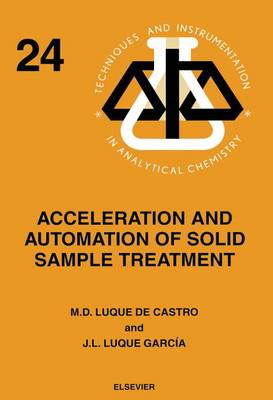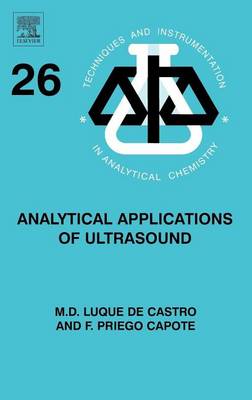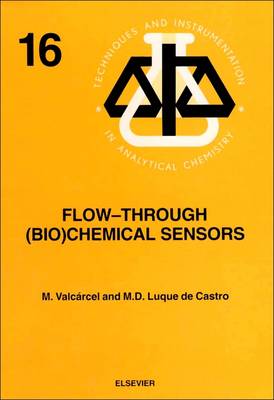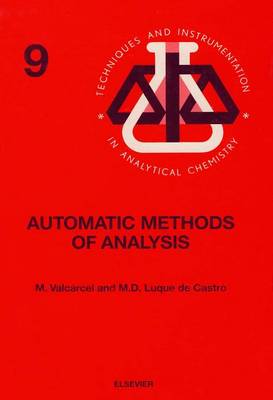Techniques and Instrumentation in Analytical Chemistry
2 primary works • 4 total works
Book 24
Acceleration and Automation of Solid Sample Treatment
by M D Luque De Castro and J L Luque Garc a
Published 1 January 2002
This book aims to provide scientists with information about a series of techniques that can be used with a view to facilitating the transformation of the sample to an appropriate state for subsequent detection or quantitation of its components of interest. The techniques dealt with range from the very simple ones (e.g. freeze-drying) to other more complex ones (e.g. glow discharge and laser-induced breakdown sampling).
This is the first compilation ever on the subjects of acceleration of solid sample pretreatment; automation of solid sample pretreatment; and integration of solid sample pretreatment and detection. Readers will find here the information required to compare and select the best choice for each sample treatment need and ways to facilitate or automate the most complex and time-consuming step of the analytical process when solid samples are involved.
This is the first compilation ever on the subjects of acceleration of solid sample pretreatment; automation of solid sample pretreatment; and integration of solid sample pretreatment and detection. Readers will find here the information required to compare and select the best choice for each sample treatment need and ways to facilitate or automate the most complex and time-consuming step of the analytical process when solid samples are involved.
Book 26
Analytical Applications of Ultrasound
by F Priego Capote and M D Luque De Castro
Published 15 December 2006
Ultrasound is an energy source that has the potential for enhancing many stages of experimental analysis, but analytical chemists generally have limited knowledge of this technique. Analytical Applications of Ultrasound lays the foundations for practicing analytical chemists to consider ways of exploiting ultrasound energy in their research. This timely and unique book covers a broad range of information about ultrasound, providing advances in ultrasound equipment and demonstrations of how this energy has been used to enhance various steps of analysis. Given the limited literature on analytical applications of ultrasound, the authors provide information from other sources that suggest ways in which we can use it in the analytical laboratory. The authors discuss the principles of ultrasound and the variables we must consider in adapting ultrasound to different problems.
v. 16
Flow-through sensors are more suitable than classical probe-type sensors for addressing real (non-academic) problems. The external shape and operation of flow-through (bio)chemical sensors are of great practical significance as they facilitate sample transport and conditioning, as well as calibration and sensor preparation, maintenance and regeneration, all of which result in enhanced analytical features and a wider scope of application. This is a systematic presentation of flow-through chemical and biochemical sensors based on the permanent or transient immobilization of any of the ingredients of a (bio)chemical reaction (i.e. the analyte, reagent, catalyst or product) where detection is integrated with the analytical reaction, a separation process (dialysis, gas diffusion, sorption, etc.) or both.The introductory chapter provides an overview of (bio)chemical sensors and their impact on analytical chemistry. Essential concepts of flow-through (bio)chemical sensors including their definition, classification, the types of flow-cells where the sensing microzone can be accommodated, continuous-flow configurations to which they can be coupled, the measurement modes available and the types of transient signals obtained, among others, are the subject of Chapter 2. The remaining chapters classify the most relevant types of flow-through (bio)chemical sensors according to the processes taking place at the sensing (recognition) microzone, as well as their position in space and time.The book deals critically with most types of flow-through sensors, discussing their possibilities and shortcomings to provide a realistic view of the state-of-the-art in the field. The large numbers of figures, the wealth of literature references and the extensive subject index complement the text.
Automatic Methods of Analysis
by M Valcarcel, M Valc Rcel, and M D Luque De Castro
Published 1 August 1988



